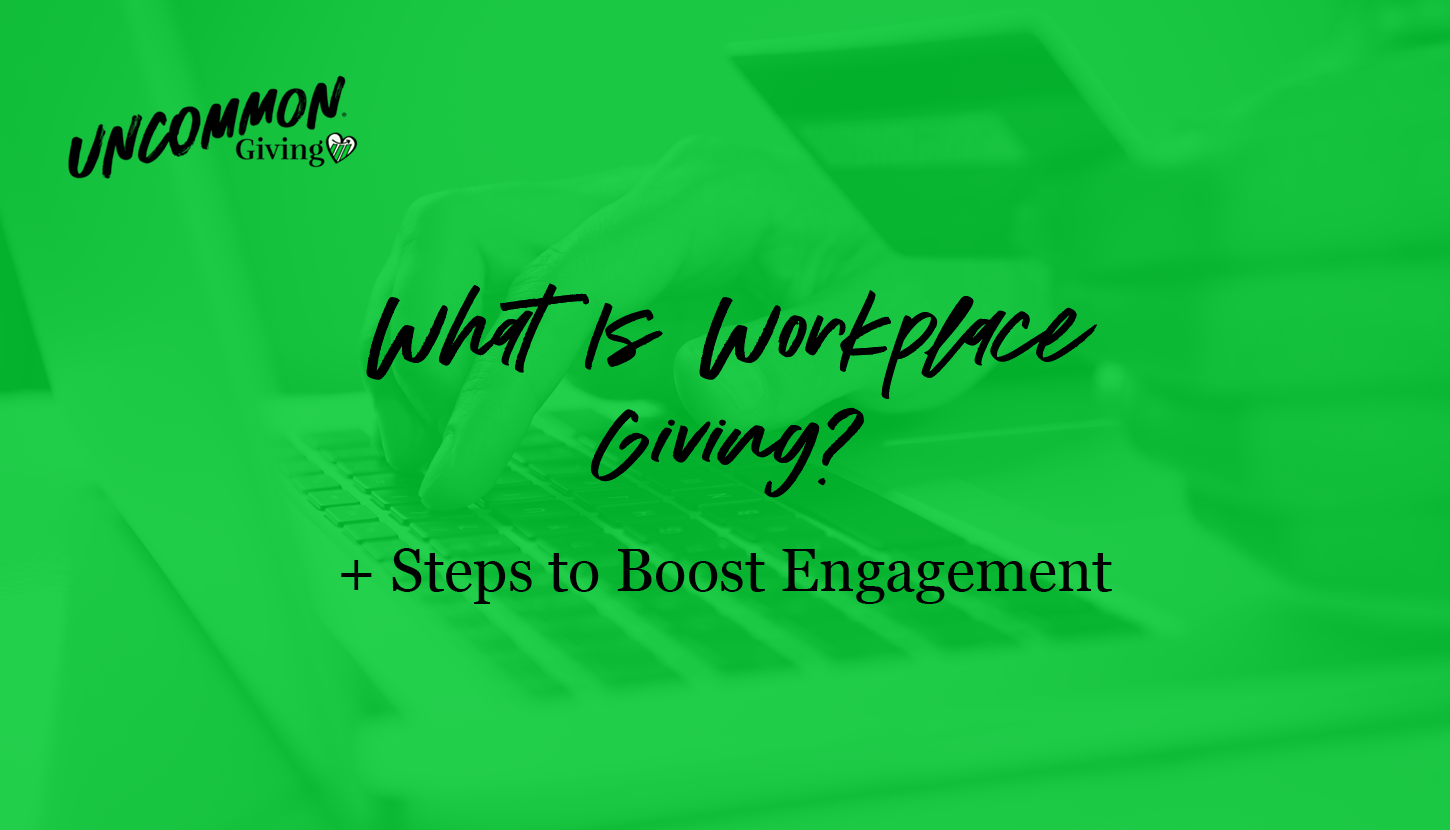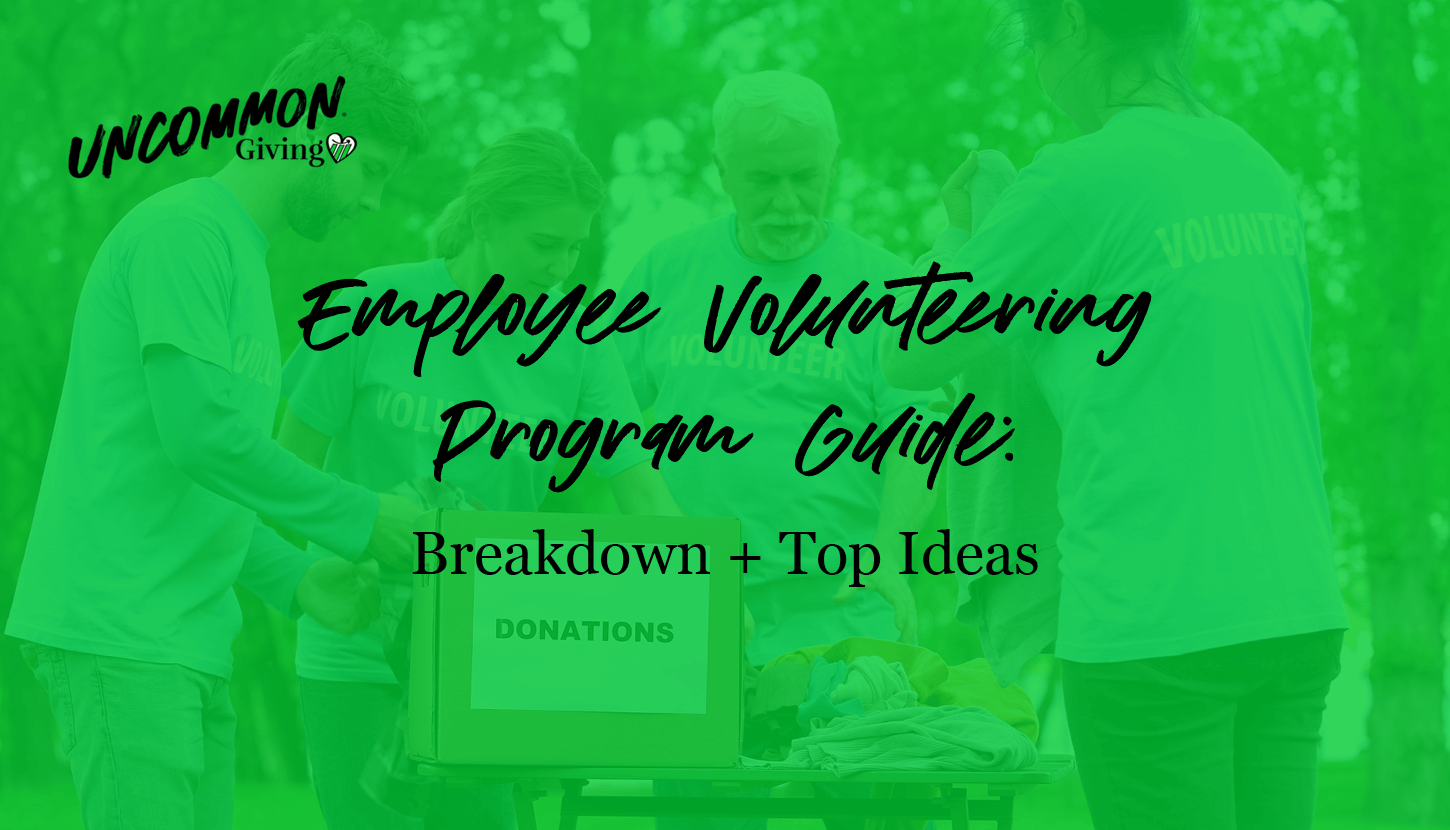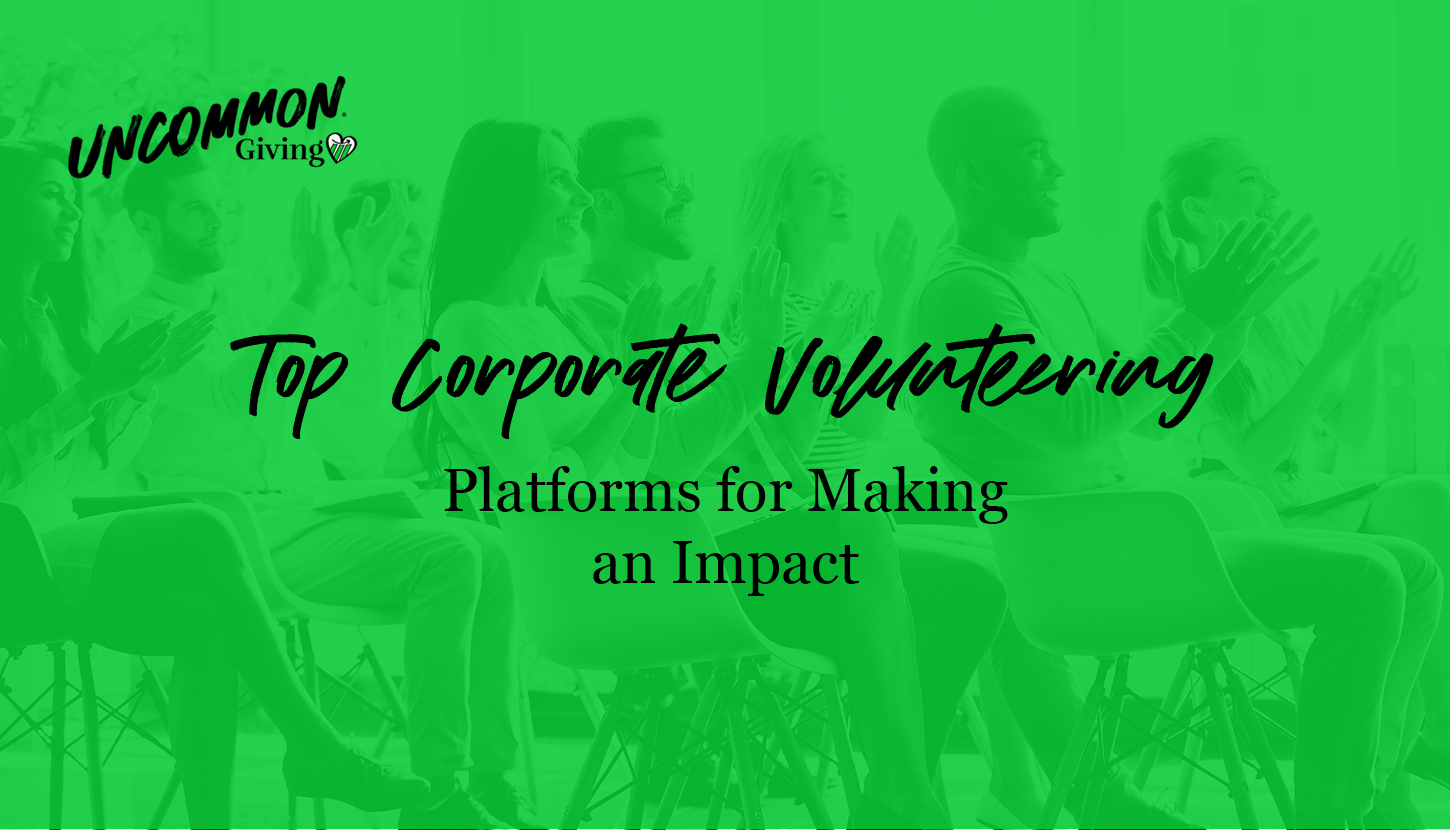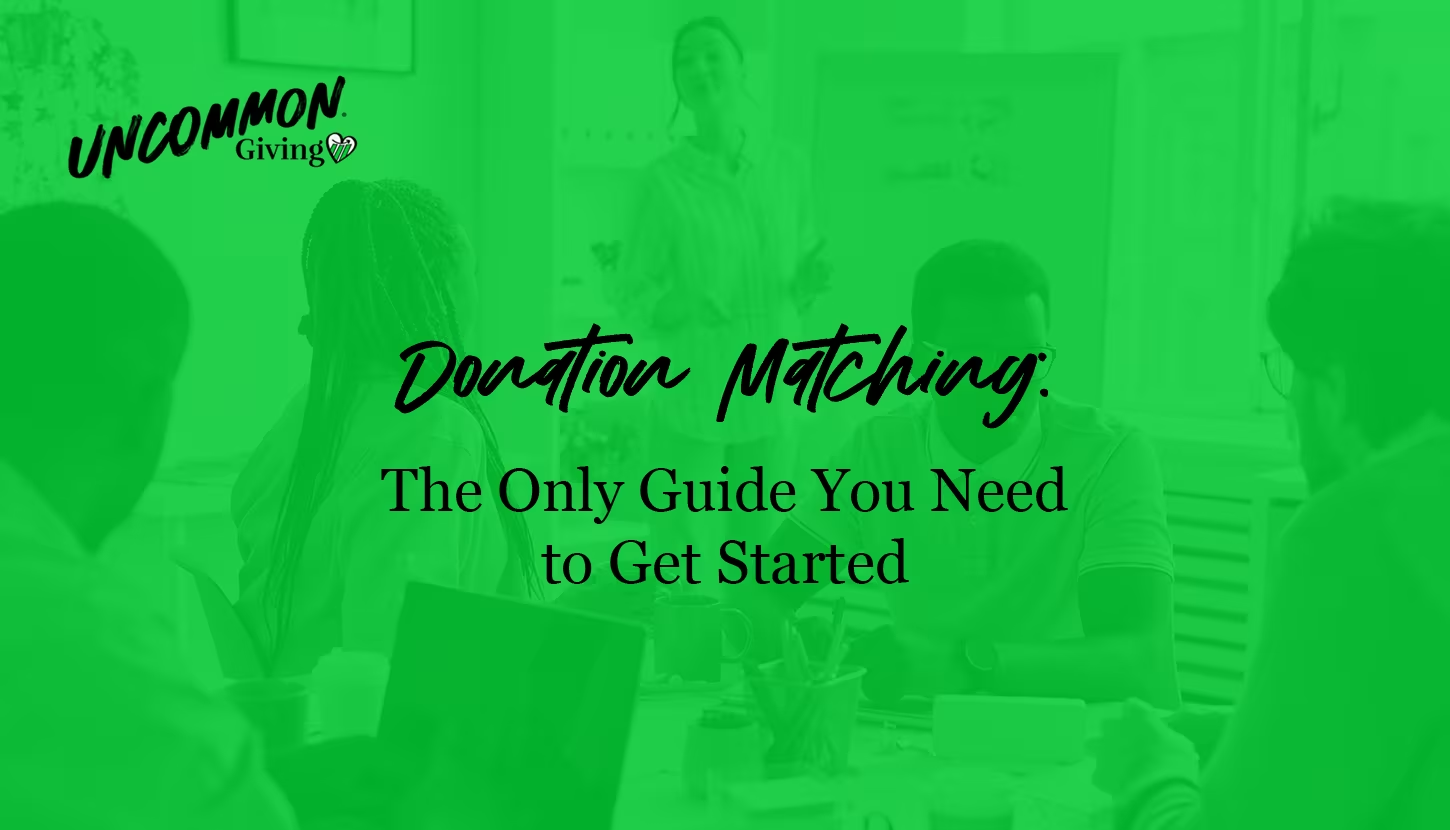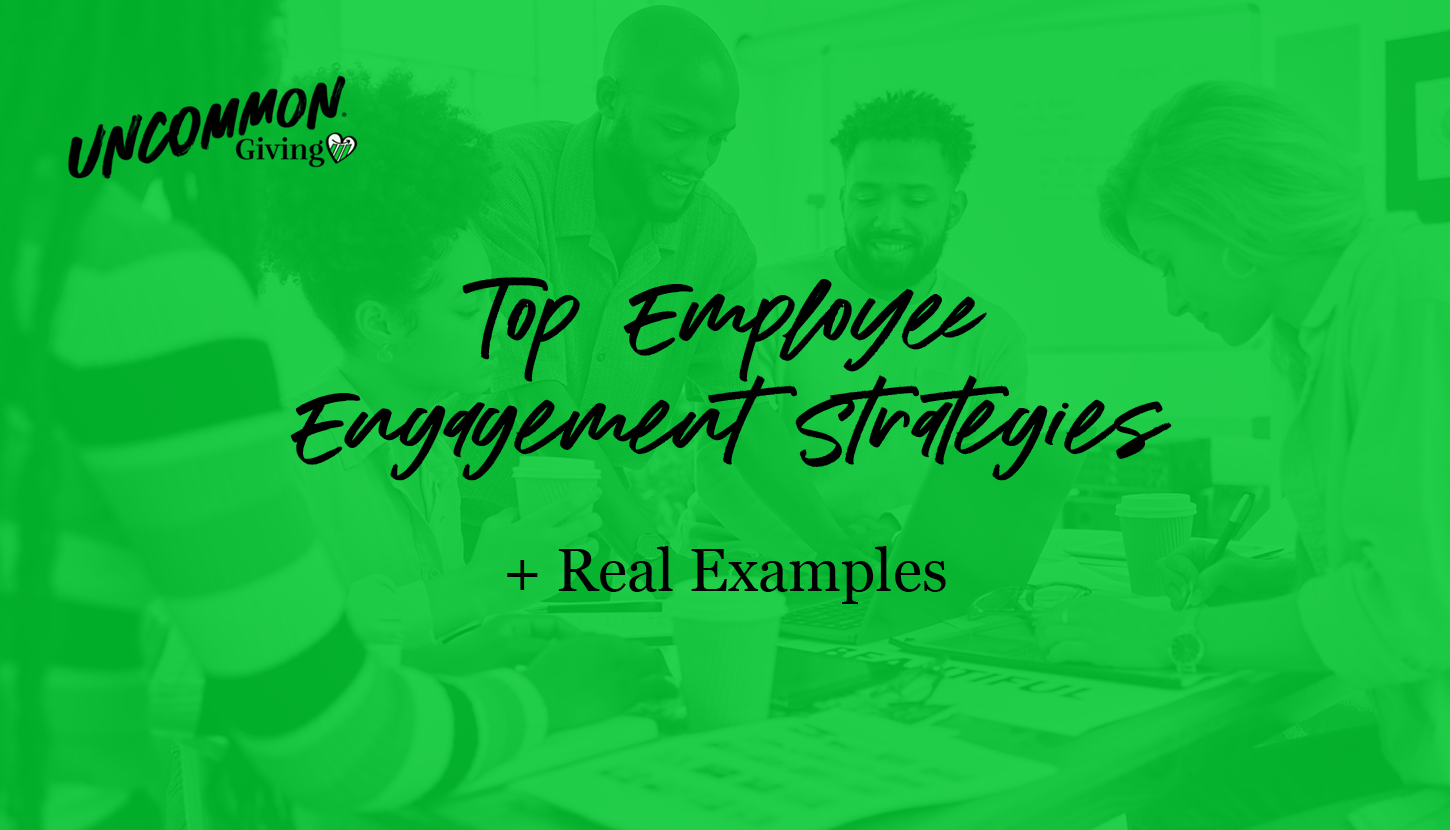A company’s long-term success depends on several key factors: its employees, public image, loyal customers, and ability to innovate. Because of this, many are beginning to create dedicated strategies for corporate social responsibility (CSR) and workplace giving. By demonstrating a commitment to social good, your company can appeal to modern expectations and position itself as a forward-thinking brand worthy of support.
Whether you’re new to workplace giving or looking to improve your programs, we’ll cover the following topics to set you up for success:
- What Is Workplace Giving?
- What Are the Benefits of Workplace Giving?
- 5 Steps to Create Successful Workplace Giving Programs
- Top Examples of Employee Giving Programs
Did you know that 94% of major U.S. corporations intend to heighten or maintain their charitable giving in the next few years? It’s now more important than ever for your company to incorporate workplace giving into your operations and culture. With a thoughtful approach and the right tools at your disposal, you’ll be well on your way to engaging employees and improving your bottom line.
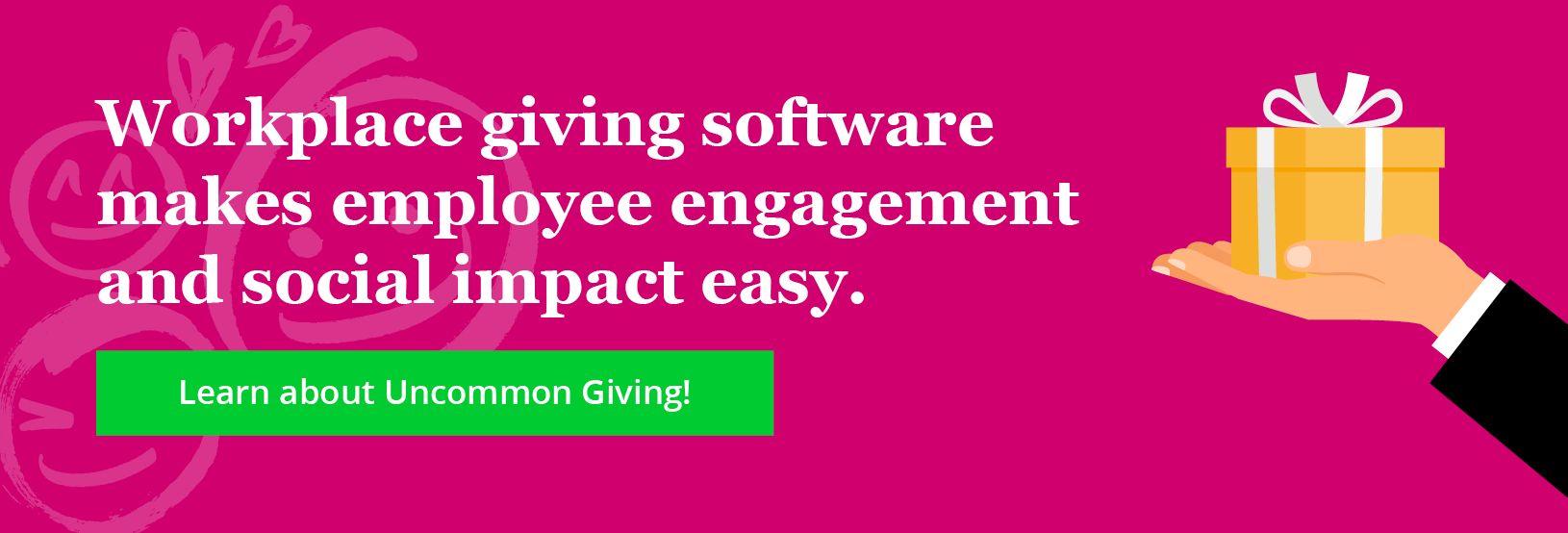
What Is Workplace Giving?
Workplace giving refers to a variety of company initiatives that promote social impact by facilitating donations of time and money to charitable causes.
Some of the most common types of workplace giving programs include:
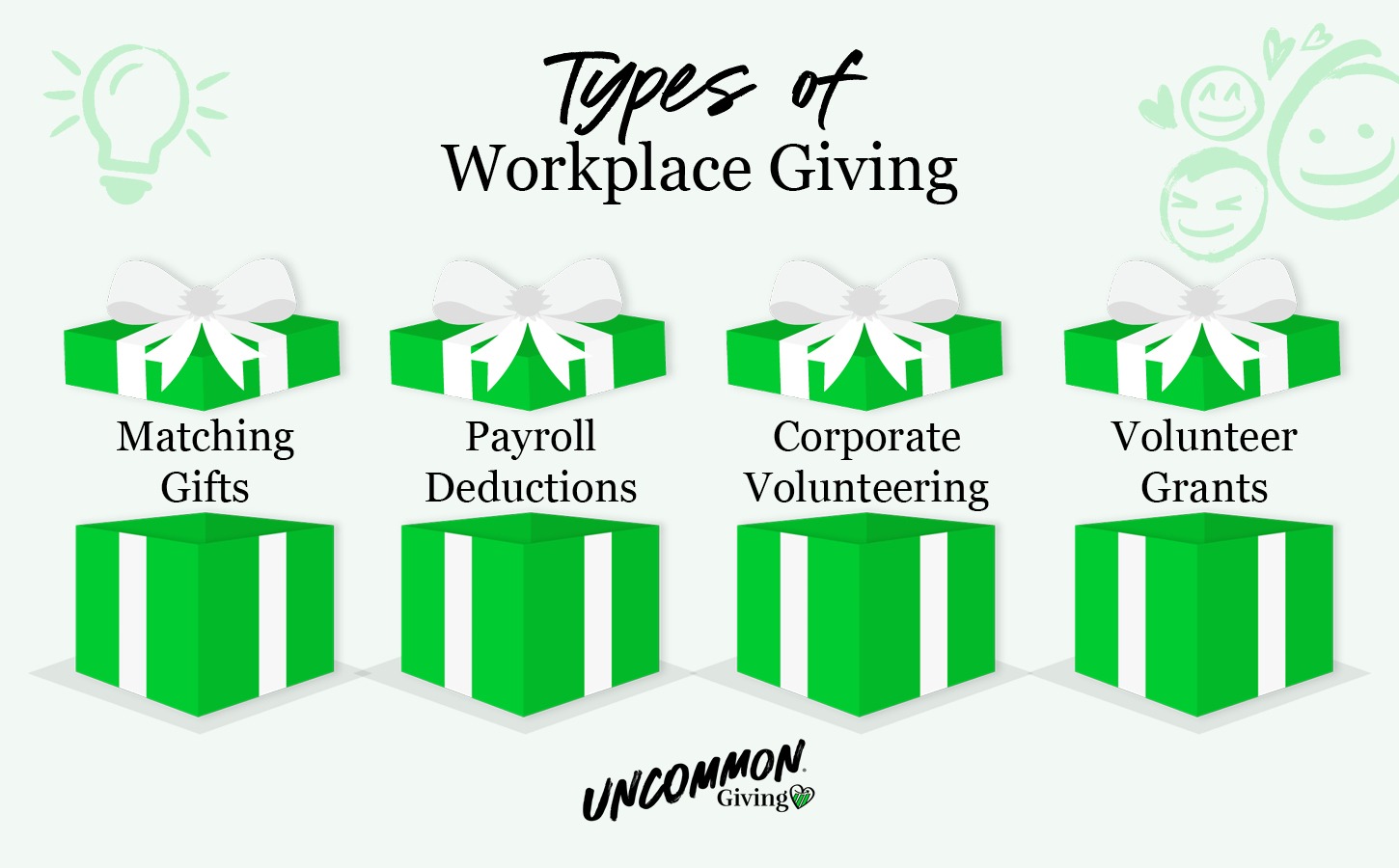
- Matching gifts. When an employee makes a gift to an eligible nonprofit, your company will match that gift amount—typically at a 1:1 ratio, though some programs go as high as 3:1. This way, employees can double, triple, or even quadruple the impact of their donations.
- Payroll deductions. Employees can automatically deduct a portion of their paycheck to go toward their nonprofit of choice. These deductions take place on a recurring basis and provide employees with a convenient way to become consistent contributors to charitable causes.
- Corporate volunteering. Your company can encourage employees to commit their time and skills to nonprofits by sharing volunteer opportunities within the community and planning team-wide events.
- Volunteer grants. After an employee volunteers a certain number of hours with a nonprofit, your company will make a financial gift to the organization. The amount usually depends on how many hours the employee has contributed.
Typically, companies use workplace giving software to manage these initiatives, make it easy for employees to participate, and track engagement.
What Are the Benefits of Workplace Giving?
Implementing workplace giving programs brings a host of benefits to everyone involved. Specifically, your company can experience:
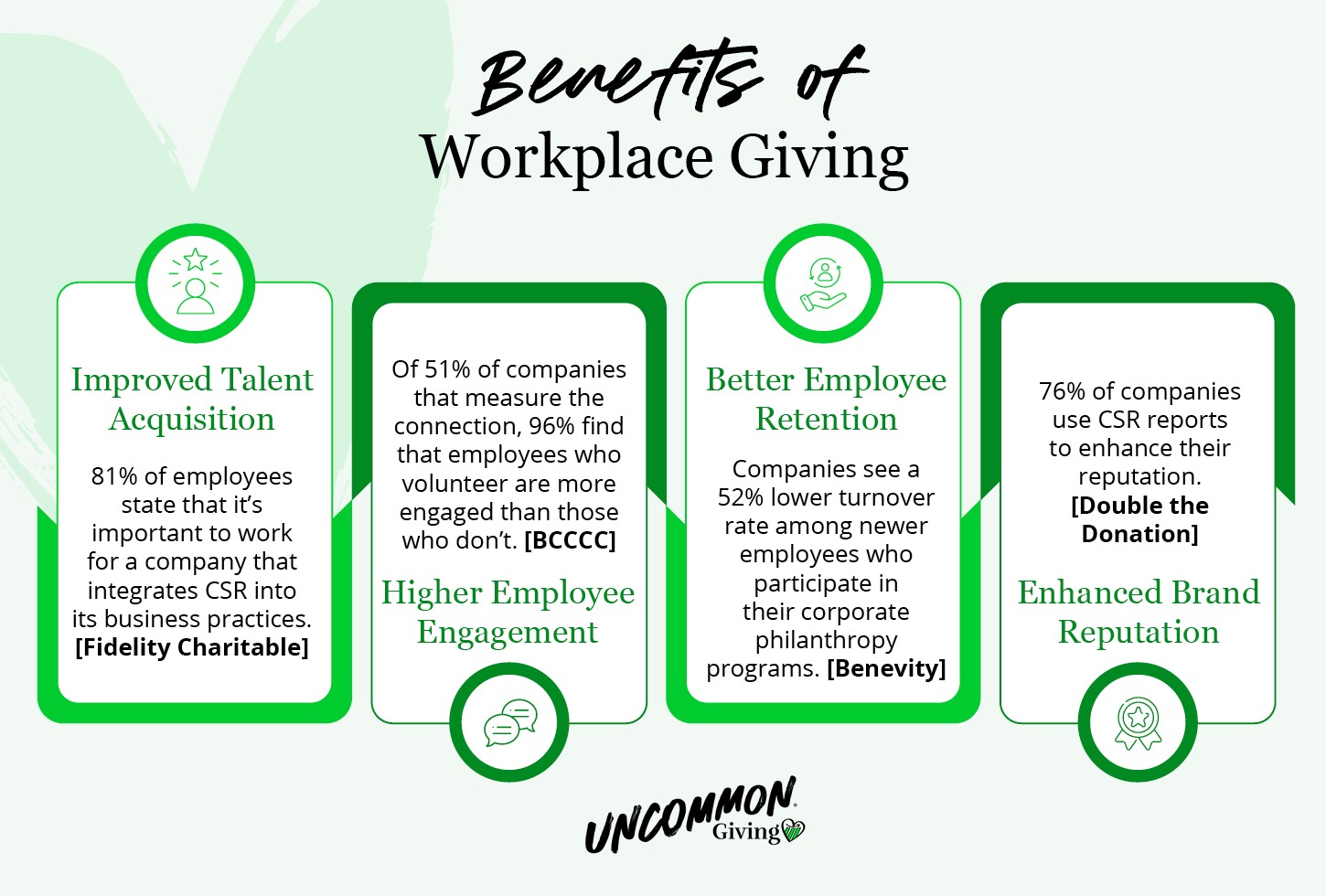
- Improved talent acquisition. A focus on workplace giving can make you stand out in the eyes of socially conscious, talented job seekers. Nearly 71% of workplace donors want to work for employers with missions and values that align with their own. More specifically, 81% of employees state that it’s important to work for a company that integrates CSR into its business practices.
- Higher employee engagement. Of the 51% of companies that measure the connection, 96% find that employees who volunteer are more engaged than those who don’t. When employees believe that they’re making a difference at your company, they’re much more likely to feel fulfilled and motivated in their roles.
- Better employee retention. 58% of surveyed companies reported that workplace giving programs are somewhat or very important in retaining talent. Plus, companies see a 52% lower turnover rate among newer employees who participate in their corporate philanthropy programs.
- Enhanced brand reputation. 76% of companies use CSR reports to enhance their reputation. Modern employees, customers, and investors are drawn to businesses that are interested in more than just making profits. Well-thought-out workplace giving programs demonstrate that your company is committed to acting as a force of good in the world.
As you infuse social purpose into your company culture, your employees and the nonprofits you support will benefit, too. For employees, their individual philanthropic goals become a group effort, amplified by your company’s programs. Plus, volunteering provides opportunities for them to connect with their peers and develop new skills.
Over time, your company can develop long-term partnerships with nonprofits, which can streamline your workplace giving, improve your brand image, and generate more overall impact.

5 Steps to Creating Successful Workplace Giving Programs
Ready to tap into the full benefits of workplace giving? Follow these five steps to launch workplace giving programs at your company:
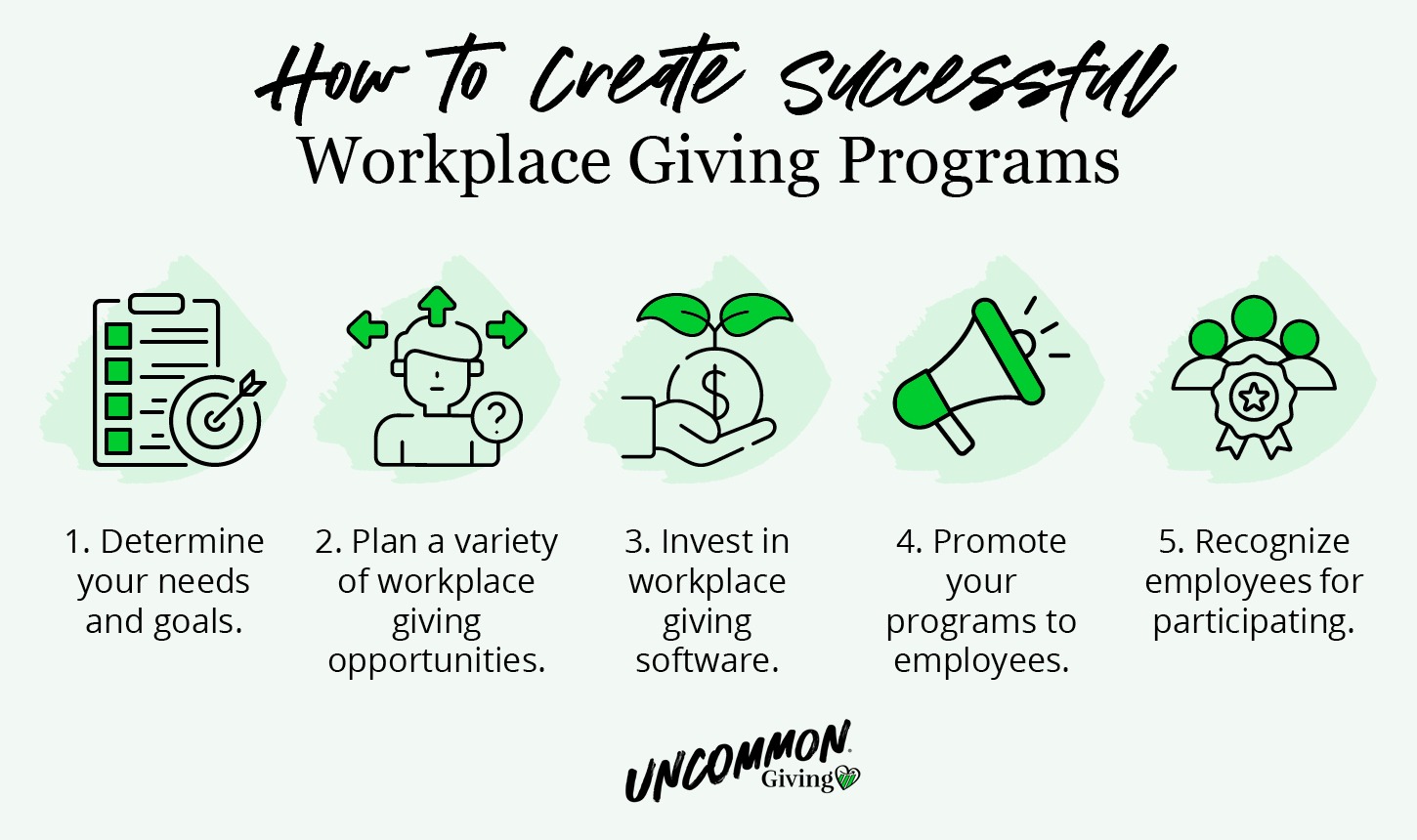
1. Determine your needs and goals.
Since every company has its own objectives, mission, and budget, there is no one-size-fits-all approach to implementing a workplace giving program. Use these basic tips to get a lay of the land at your company:
- Gather input from various stakeholders. Survey key individuals across your company, including members of your leadership team, human resources (HR) specialists, and employees. Ask about the causes they’re most interested in, what types of workplace giving opportunities would drive the most engagement, and any other factors you need to consider to make your programs as inclusive as possible.
- Consider the most pressing needs in your community. Reflect on your company’s industry and specialties. Then, conduct research into nonprofit needs and initiatives within your community. In doing so, you might uncover areas where your company can power significant change and impact.
- Specify what you hope to achieve through workplace giving. Outline what you expect to accomplish through your workplace giving programs. Are you trying to boost employee morale? Attract more top talent? Support a specific cause that closely aligns with your mission and values? Defining your desired results upfront will guide your decision-making as you design the details of your programs.
Based on the information you collect, set key performance indicators (KPIs) to measure your workplace giving success. For example, you might decide to track employee participation rates, the number of volunteer hours logged, and the amount of matching gift funds contributed.
2. Plan a variety of workplace giving opportunities.
Your employees will vary greatly when it comes to the amount of time, money, and energy they can dedicate to your workplace giving initiatives. By providing numerous opportunities to get involved, your company can maximize participation and increase the chances that they find an option that suits their preferences.
Whether you’re planning to offer payroll deductions or host regular corporate volunteering events, compile everything into a workplace giving policy for employees to reference. This document should include information such as:
- The types of nonprofits and specific causes you’re focused on supporting
- Eligibility requirements for nonprofits, such as having a 501(c)(3) status
- Which employees (full-time, part-time, or retired) can participate in which programs
- Who employees can reach out to with additional questions
Additionally, depending on the programs you establish, be sure to communicate specific guidelines for participation. For example, if you’re launching a matching gift program, share any minimum or maximum match amounts, your company’s match ratio, and the annual deadline for employees to submit a request.
3. Invest in workplace giving software.
Running multiple workplace giving programs and measuring KPIs can seem like a lot of effort for your company. That’s where workplace giving software comes in. Investing in one of these platforms allows you to significantly streamline program management and create rewarding experiences for your employees.
When researching workplace giving platform options, look for the following features:
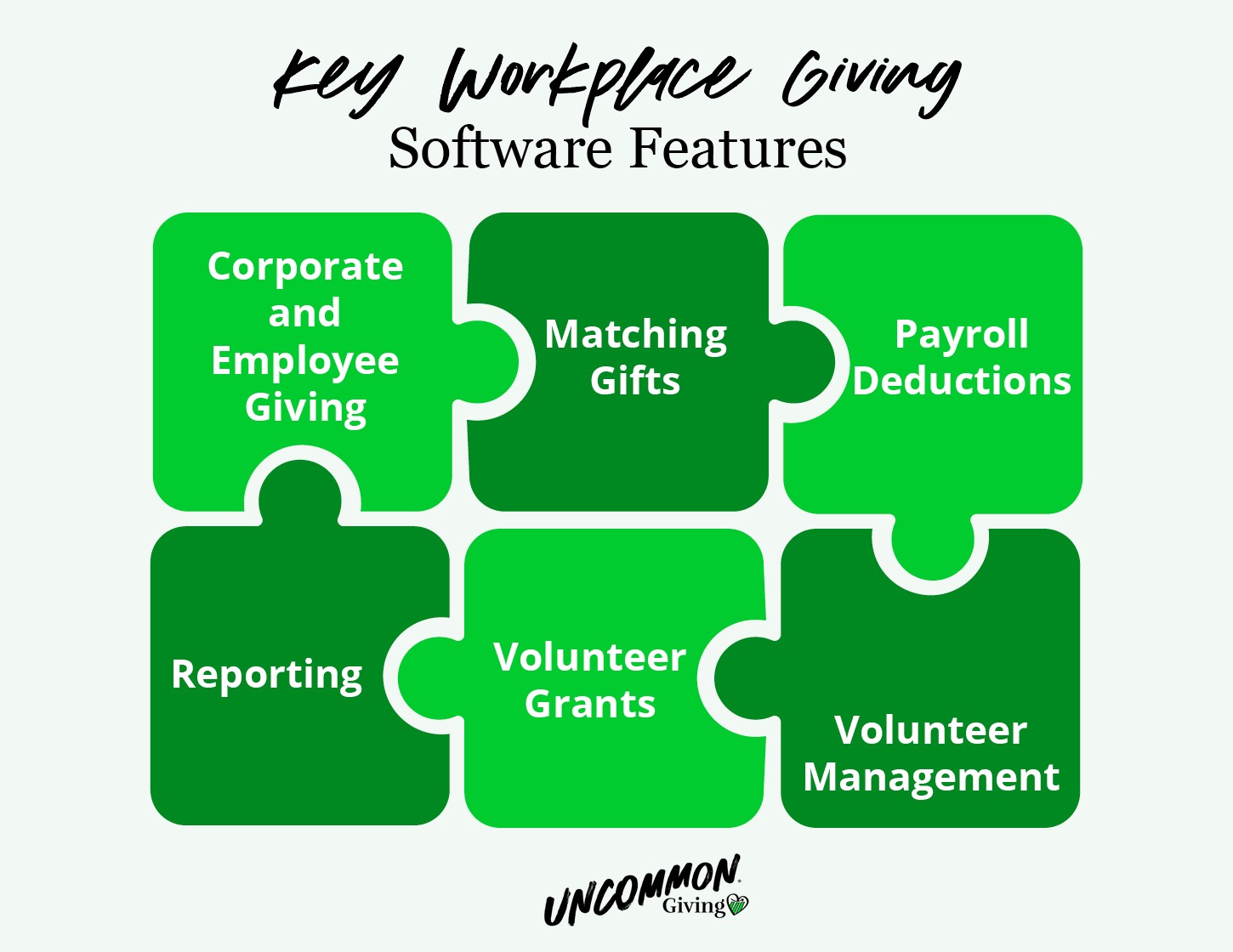
- Corporate and employee giving. Your company should be able to award grants to nonprofits, facilitate individual employee donations, and track employee giving to various causes.
- Matching gifts. Workplace giving software simplifies and automates many steps of the matching gift process. When employees submit matching gift requests, the platform can automatically approve the ones that meet your specific program criteria.
- Payroll deductions. Your workplace giving platform should integrate with your payroll system so employees can set up payroll deductions to donate toward their nonprofit of choice.
- Volunteer management. Your company should be able to engage employees in a variety of corporate volunteering opportunities with features for planning team-wide activities, hours tracking, and more.
- Volunteer grants. When an employee logs a certain number of volunteer hours with a nonprofit, they should be able to submit a volunteer grant request online. Then, the platform will process the request and award the grant if your eligibility criteria are met.
- Reporting. With real-time reporting dashboards, your company should be able to stay on top of its KPIs and communicate its impact with stakeholders.
More than 55% of employees believe that it’s very important for their company to have an easy-to-find platform for registering and participating in workplace giving programs. Consider looking for a workplace giving solution that comes with a mobile app to provide further convenience to employees and boost engagement.

4. Promote your workplace giving programs to employees.
Once you’ve set up your workplace giving programs and platform, it’s time to get your employees involved. Make sure they’re aware of all the opportunities you offer by:
- Promoting your programs in company-wide announcements
- Including basic details in employee onboarding materials
- Adding an overview of your programs to your company website
- Hosting Q&A sessions to discuss participation details
- Sharing program updates and impact on social media
- Organizing dedicated events throughout the year, such as on GivingTuesday
Encourage members of leadership and management to set an example for employees by actively engaging in your workplace giving initiatives. As more people take part, communicate success stories and relevant metrics to keep them continuously invested in your programs.
5. Recognize employees for participating in workplace giving.
To maintain engagement in your workplace giving programs, recognize employees for their participation. In doing so, you can cultivate a culture of generosity at your company, enhance morale, and make employees feel individually valued for their contributions.
Several methods for employee recognition to consider are:
- Sending thank-you emails or eCards. Create email templates that your team can personalize with each employee’s name and details of their involvement. You can take your messaging a step further by creating eye-catching eCards that managers and peers can send to shoutout employees who go above and beyond.
- Hosting celebration events. After a major initiative or accomplishment, plan an event to gather your employees and go over all the impact they’ve generated. You can even invite your nonprofit partners to build a more tangible connection between employee giving participation and their social impact.
- Handing out gift cards or other small rewards. Show employees how much your company values their engagement in your programs by distributing gift cards or other rewards, like branded mugs and t-shirts. You can give these out after a team-wide event or after individual employees complete a milestone in their participation.
- Presenting company awards. Create dedicated awards to present to standout employees. For example, you might give a “Change Champion” award to an individual who consistently organizes volunteer activities and fundraising events to rally their team members together.
- Spotlighting key contributors on social media. With their permission, feature your top employee contributors alongside their impact in social media posts. These posts can inspire other employees to join your workplace giving initiatives.
Furthermore, send out regular surveys to gather employee feedback and identify potential improvements you can make to your programs. By continually refining your workplace giving opportunities, you can increase engagement and deepen your impact over time.
Top Examples of Employee Giving Programs
Your workplace giving programs don’t have to start or exist in a void. Since many other companies have launched successful initiatives, why not learn from what they’re doing well? Let’s look at three examples of companies with workplace giving programs that you can use to inform your efforts:
1. Chick-fil-A
Chick-fil-A is another company that has successfully incorporated social purpose into its culture. Through a volunteerism program known as Team Chick-fil-A, staff members contributed 7,000 community service hours in a single year. To promote volunteering, the company offers full-time staff 40 Wellness Hours every year, which they can use to engage in service and other wellness activities.
If you’d like a closer look at how Chick-fil-A uses workplace giving software like Uncommon Giving to power its programs and engage employees, check out this brief video overview:
With a modern, lightweight platform on your side, your company can provide employees with personalized giving and volunteering experiences that add up to significant collective impact.
2. Mission Wealth
As a wealth and investment management company, Mission Wealth is committed to transforming its success into community impact. Every year, the firm contributes a percentage of its profits to nearly 150 nonprofits and encourages individual employee involvement in four main areas: environmental protection, health and human services, youth and education, and financial literacy.
Mission Wealth’s workplace giving programs include opportunities such as:
- Volunteer time off (VTO)
- Team volunteering events
- Virtual volunteering roles
- Matching gifts
- Team giving
With user-centric corporate giving software like Uncommon Giving, your company can offer a similar range of social impact opportunities. Our platform makes it easy for you to tailor your programs to your specific mission and employee interests to make a purposeful difference in your community.
3. Actualize Consulting
Actualize Consulting is a financial services firm that focuses its CSR initiatives on engaging employees in hands-on giving.
For example, the entire company combines fundraising with wellness by participating in Alex’s Lemonade Stand’s Million Mile, during which team members run, bike, or walk as many miles as they can over a month to raise funds to help cure childhood cancer. Additionally, employees enjoy supporting The Doe Fund by holding mock interviews and donating business clothing to help formerly incarcerated individuals in their job searches.
Actualize Consulting is a stellar example of a company that has built lasting partnerships with nonprofits in its community. If your company is interested in pursuing similar partnerships to concentrate its social impact, look for a workplace giving platform that comes with a database of verified nonprofits. Uncommon Giving, for instance, allows you to browse through over 1.5 million nonprofits, vetted twice a month, to find philanthropic opportunities for your company.
Wrapping Up: Making the Most of Workplace Giving with Software
You don’t need to be a major company to make waves with your workplace giving programs. By embracing the power of workplace giving software, you can streamline your initiatives, maximize employee engagement, and deepen your impact in the community—no matter your size or budget. Keep your CSR goals in mind as you research platform options, read reviews, and request demos to find the best fit for your company.
For more information on how you can leverage technology to improve your engagement and impact, explore our additional resources:
- 11 Best Corporate Giving Software for Easy Social Impact. Jump-start your corporate giving software research by learning about the top solutions in this guide.
- 12 Top Corporate Volunteering Platforms for Making an Impact. Ready to get your employees involved in their communities? Learn what to look for in a corporate volunteering platform and how to get started with one.
- Empowering Businesses of All Sizes with Social Impact Technology. Read more about the benefits of adopting workplace giving software in this guide.
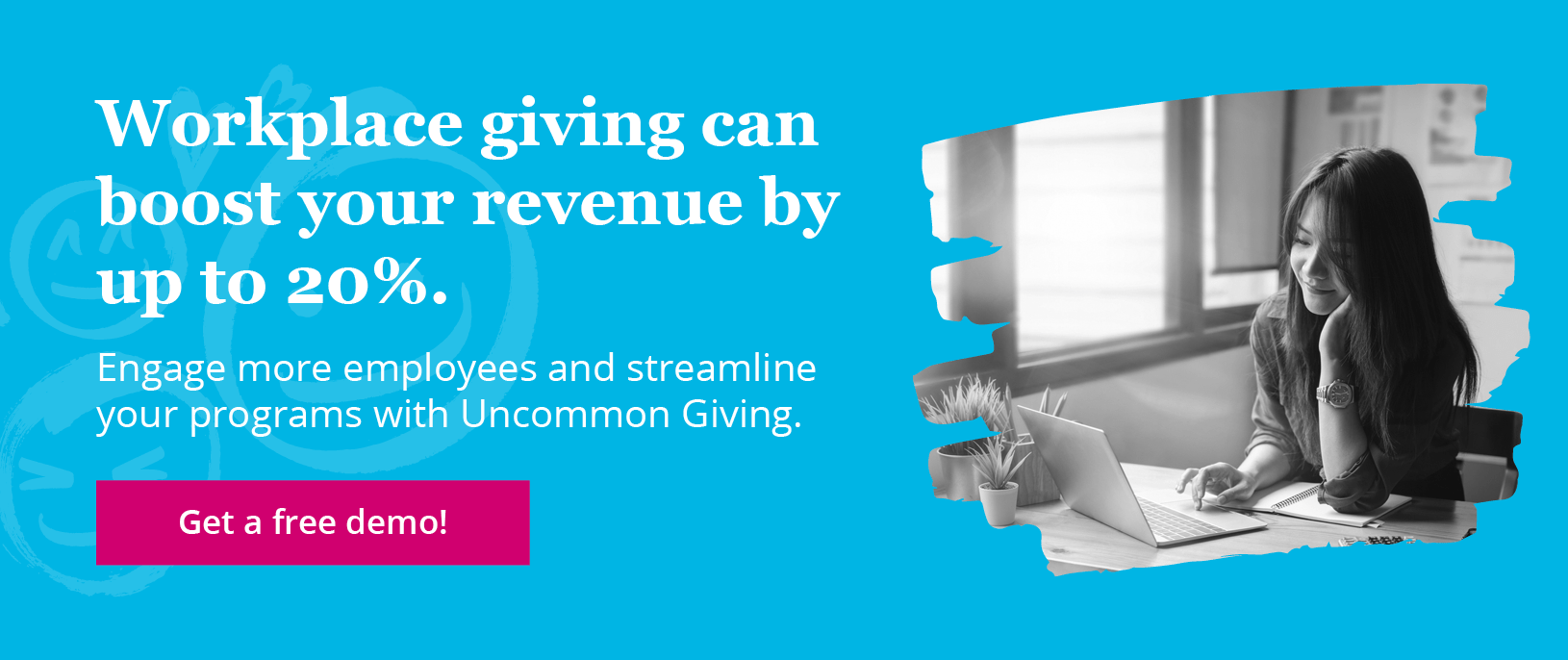
Andy Howell
Andy Howell is the CEO of Uncommon Giving, a Charleston-based social impact platform that helps companies engage employees in workplace giving and volunteering—think of it as “generosity-powered” employee engagement. Uncommon Giving provides modern, cost-effective tools for employers to live their corporate values, improve employee morale, and enhance brand reputation. Andy has spent the majority of his career working with SaaS companies serving the nonprofit, HR, and social impact spaces, including Blackbaud, Benevity, Benefitfocus, and Bloomerang. In his role today, he brings a distinct point of view to the meaningful connection between corporate social responsibility, employee engagement, and the desire to make the world a better place.

